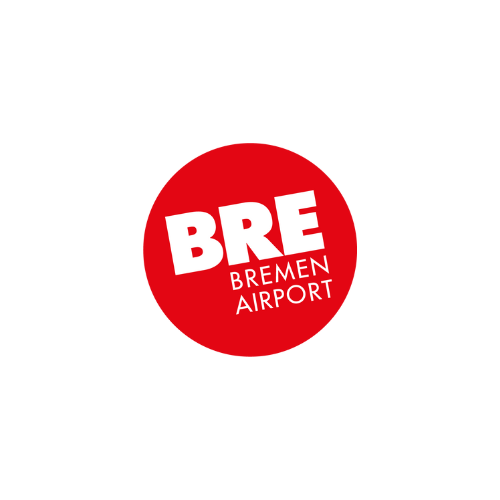The integration of digital and mobile into everyday life has hugely influenced customer behaviour, but there’s nothing like a global pandemic to accelerate it to a whole new level. Did you know that 75% of consumers tried a new store, brand or different way of shopping during the COVID-19 pandemic? Within the space of a year, the pandemic completely shifted the nature of consumer behaviour and, likely, for good.
As we adjust to our new normal, consumer expectations, buying and browsing habits continue to develop. With this in mind, airport marketers must be intuitive about their customers’ needs and transform their marketing and customer service accordingly.
How customer behaviour has changed
The pandemic has changed the way people are shopping, but it’s not as cut-and-dry as you might think. Consumers aren’t simply switching online and leaving brick-and-mortar stores empty. Instead, they are favouring brands that offer an omnichannel experience. Consumers desire convenience – the ability to start the buying journey on one platform and pick it up seamlessly on another.
Additionally, consumers are looking to find the same magical retail experience they’d enjoyed in-store, online. As a result of the pandemic, many retailers have extended their in-store experience through channels like Instagram and Facebook, using their platforms for live events to increase engagement.
And while you might assume that brand loyalty would increase through the pandemic, this doesn’t appear to be the case. According to the Marketing Insider Group, about a quarter of consumers report they’re switching brands more often than ever before.
With more and more brands raising their online profiles across all industries, a more extensive product choice, and increased conveniences like same or next day delivery, the power is directly in the customers’ hands to choose one of the many options at their fingertips.
Brand loyalty isn’t a given. Businesses are working harder than ever to improve their offerings and prevent consumers from straying, with the savviest, integrating their marketing and customer service to deliver the ultimate experience.
In light of these changes to customer behaviour, you might be questioning what you can do to captivate your airport’s audience. After all, now the skies have reopened, there are more and more people passing through your terminals and visiting your retail stores, so what better time to change up your tactics and make a real impact?
Let’s look at three tactics that airports are using to respond to changes in customer behaviour and how you can implement them.
1. Build a unique strategy for your airport
As it becomes more challenging to achieve profit through aeronautical operations alone (especially during the pandemic), retail has become an essential part of an airport’s overall revenue.
Airports are responding to the challenges in the airline market and changes in customer behaviour by offering contactless, convenient services such as click-and-collect at their retail outlets and restaurants. Customers place an order through the airport’s website or app, make a contactless payment and get a designated time to pick up their order. Some airports are also going a step further and offering delivery to airport lounges and gates for a truly convenient service.
Alongside these efforts, airports are increasing their product offerings via their website. With the right technology partner, it becomes possible to make all airport services accessible online. For example, customers can book flights, parking, fast-track security and lounge access, receive special offers at airport stores and find live flight and destination information all in one place for increased convenience.
It’s all about finding out what your customers need most and delivering it. And that’s where we come in. Our plug-and-play airport marketplace comes with flexible features to help you connect with customers, build trust and unlock revenue. With advanced travel, reservation, ecommerce, venue, customer, marketing and business modules, you’ll have everything you need at your fingertips to identify and respond to changes in customer behaviour.
2. Make the airport a destination in its own right
Airports are becoming marketing hotbeds, and this includes embracing experimental and experiential retail activities such as pop-up shops and restaurants. The aim is to transform the terminal building into a vibrant environment – a destination in its own right.
The trend for airport pop-ups has exploded in recent years as luxury retailers exploit an opportunity to extend their branding creativity and connect with the diverse and captive demographic presented by an airport’s passengers.
This kind of marketing within the terminal has positive implications for both the brand and the airport. While the airport can gain profile, publicity, a shiny new aesthetic and a reputation for enterprise, the retail or restaurant outlet can deliver its brand story in an innovative way outside the traditional platforms of bricks-and-mortar or ecommerce. These pop-ups also present a valuable source of consumer data and insight that airports can then use to inform world-class customer service.
In August, Nice airport announced tenders for three innovative pop-ups to coincide with the predicted return of passenger traffic at the site. The airport has previously had over 60 brands operating in its spaces.
The attraction for airports is obvious. Pop-up shops and other interactive marketing installations create an exciting and engaging passenger environment. Pop-up shops are less transitory than airport kiosks, and brands will invest more time, resources and creativity to deliver one-of-a-kind experiences.
When a luxury retailer develops a pop-up in the terminal building, the result is a global brand contributing to the facilities and aesthetic of that airport. With brands like Tiffany and Co., Bvlgari, Ray-Ban, Chanel, Louis Vuitton and Moncler getting involved, the pop-up is no longer a trend; it’s becoming a core marketing strategy.
The marketing potential for brands is huge. Airports present a perfect blank slate and the freedom to explore creative marketing ideas. Retailers can use vast common areas within the airport to build unique pop-up fixtures. It makes it possible to offer customers an experience that usually requires a much larger square-footage and more complex storefront.
In November 2018, a pop-up beer garden launched in Melbourne Airport, celebrating ‘all things Melbourne’ and embracing the Australian summer. T 3 ½ featured beverages from local brewing and coffee companies, a bright design from a local artist, a grass lawn, deckchairs, and of course, information screens. It gave multiple, mainly local brands the opportunity to deliver their message to a global audience and created a memorable experience for travellers at the same time.
While the operational efficiency at airports has become more streamlined due to the introduction of innovative technology, passengers still generally have at least an hour to kill between security and boarding. With nowhere else to go, they pass the time eating, drinking and shopping.
Foot traffic is a key metric for retailers, especially with a pop-up, which must achieve maximum exposure to succeed. In 2017, the world’s airports accommodated 8.3 billion passengers, and this number is expected to grow by 4.3% by 2040. Suffice it to say, airports provide a constant source of high footfall, along with a unique environment where passengers are confined in a limited space with little to do. Brands can leverage this captive audience to expand reach and sales, tapping into passengers’ desire to engage in experiences or purchase products.
This potential is not limited to giant or luxury brands. With a bit of creativity, SMBs can also take advantage of the airport space. In fact, the more limited resources behind smaller companies offer the opportunity to really think outside the box to find ways to deliver lasting, impactful results for the brand, airport and customers.
Experiential marketing events and temporary retail installations are also great for reaching an international customer base. This increases brand exposure and has positive implications for market research, informing brands about expansion opportunities. These pop-ups respond to customer behaviour and provide insight into consumer habits and behaviour changes – vital knowledge in future planning.
3. Focus on data-driven customer experience
A further factor in customer behaviour is the seemingly irreversible trend for consumers to prefer experiences over ‘things.’ As such, a meaningful customer experience is now the single most important differentiating factor for finding a competitive edge.
Airport marketers must look for new ways to understand and use customer data. This means looking for new retail associations that help define personas, engage on social media, enhance customer segmentation, and improve user experience.
Add the right technology partner to the mix, and there is endless potential for improved customer experience and revenue growth.
Get to know your customers with Rezcomm. Our powerful centralised customer identity tracking solutions will help you unify your sales data and insights from all touchpoints to deliver a fully joined-up and personalised experience to each of your customers.
Futureproof your airport strategies
Interested in finding out how you can use our plug-and-play marketplace to respond to ever-changing consumer behaviour? Get in touch with our expert team and request a copy of our brochure.




























